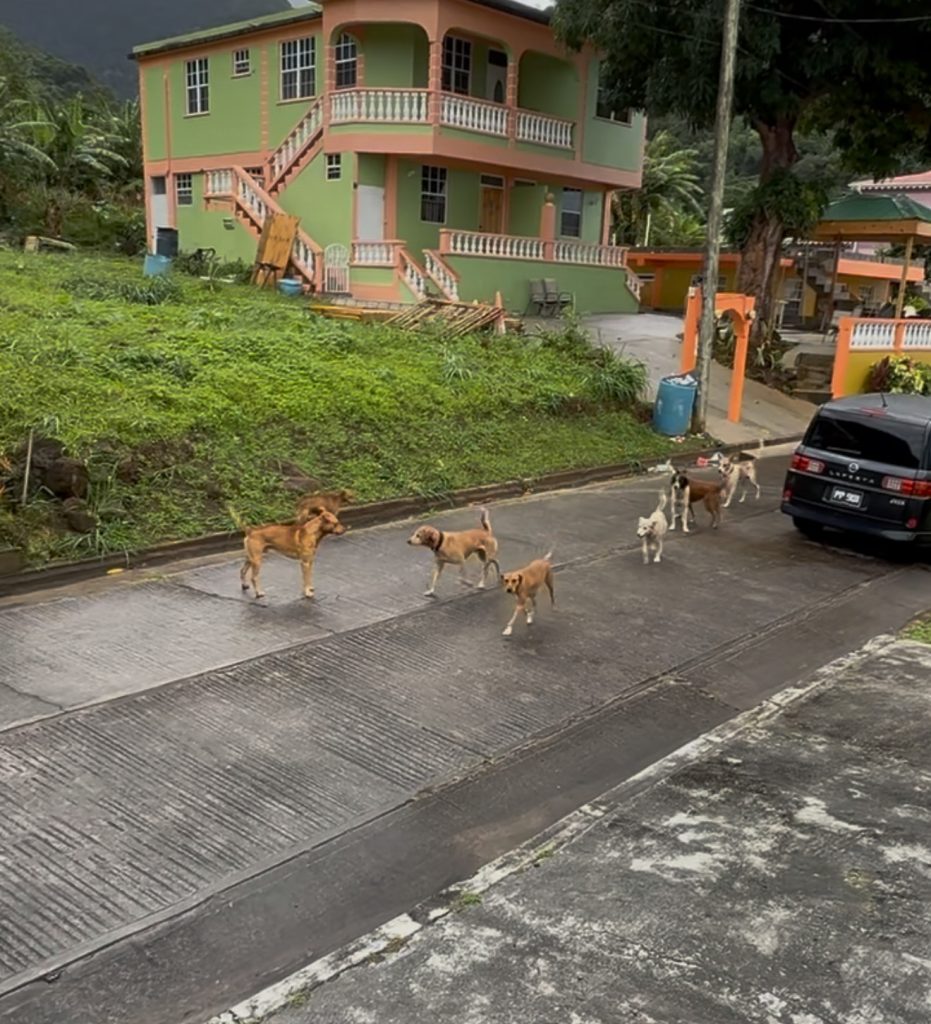
By Dale Dangleben, MD, FACS
We have a serious and growing dog problem in Dominica—one that goes beyond nuisance barking or garbage strewn across the streets. In villages like mine, Pointe Michel, the issue has taken a more alarming turn. I recently witnessed several groups of stray dogs roaming together in menacing packs, attacking goats and other vulnerable animals. This is more than just an animal control concern—it’s a public health threat.
Stray dogs are not only aggressive and destructive, but they may also be silent carriers of dangerous diseases, including leptospirosis. Often associated with rats, leptospirosis is a bacterial infection that thrives in warm, wet climates like ours. It spreads through the urine of infected animals and can enter the human body through cuts, mucous membranes, or contaminated water and soil.


In Dominica, where we periodically face outbreaks of leptospirosis following floods and rat infestations, it’s easy to overlook the role of dogs in spreading this disease. However, research and global experience show that dogs can contract leptospirosis, often with no visible symptoms, and still shed the bacteria in their urine. That means even if your home is rodent-free, an infected dog wandering into your yard or community space can unknowingly contaminate the environment.
This risk is particularly high in areas with a large population of stray dogs, like Pointe Michel. These dogs roam freely, drink from and urinate in the same puddles and streams contaminated by rats, and then enter yards, gardens, and even homes, tracking the bacteria with them. The danger multiplies when these dogs come into contact with pets or children, potentially leading to serious illness or even death if untreated.
So what do we do? First, awareness is critical. Residents need to understand that leptospirosis isn’t just a “rat problem.” It’s a community health issue that involves all animals capable of carrying and spreading the disease. Second, responsible pet ownership must be promoted—spay, neuter, and vaccinate pets to reduce stray populations and disease risk. Third, we need government and community action to control the stray dog population and provide access to veterinary care and public education.
In the meantime, we must take precautions:
• Avoid contact with stray dogs.
• Clean any areas where animals may have urinated, especially after rain.
• Wear protective gear when cleaning up animal waste or working in muddy environments.
• Report aggressive or sick animals to local authorities.
The dog packs may look like a simple village problem, but their presence and behavior signal a much deeper issue—one that intertwines public health, animal welfare, and environmental safety. Leptospirosis can’t be stopped unless we address all its carriers, including the ones walking on four legs right through our streets.
Let’s act now before the next outbreak starts at your doorsteps.
Disclaimer
The opinions presented in this content belong to the author and may not necessarily reflect the perspectives or editorial stance of Nature Isle News (NIN). Opinion pieces can be submitted to editor@natureisle.news




